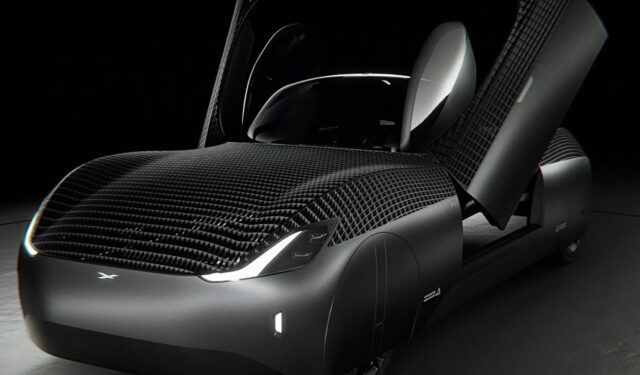This site may earn affiliate commissions from the links on this page. Terms of use.
(Image: Alef Aeronautics)How much would you pay to make your daily commute a quick flight home? If it’s somewhere in the six figures range, you’re in luck: A Silicon Valley startup is working on bringing a flying car to market, and it’ll cost around $300,000.
Alef Aeronautics, a company dedicated to developing “the world’s first real flying car,” unveiled its first prototype Wednesday at a press conference at Draper University. The electric Alef Model A is designed to take off and land vertically like a drone or a helicopter but drive and park like a conventional car, which Alef says makes the vehicle more practical for existing infrastructure. With a driving range of 200 miles and a flight range of 110 miles, the Model A technically isn’t just for commutes; it can also handle shorter road trips and help drivers skip out on traditional airfare.
There’s one major caveat to the Model A’s practicality, however: Its cabin space is severely limited. The prototype Alef showed off this week only seated one person, with alternative cabin options seating a maximum of two people (one driver and one passenger). This glaring disadvantage means the Model A will only ever work for certain people: singles, childfree couples, or families with a larger conventional car tucked away in the garage for group trips.
(Image: Alef Aeronautics)
But Alef has plans to appeal to those left behind. The company is working on the Alef Model Z, a four-person flying sedan with a driving range of 400 miles and a flight range of 110 miles. When the Model Z becomes available sometime between 2030 and 2035, it’ll cost around $35,000—a much milder price tag, which CEO Jim Dukhovny believes will help Alef further revolutionize the way people travel. “We can actually solve all traffic in the world for the next hundred years,” he said at the conference.
There is, of course, a reason for the Model A’s limited capacity. The vehicle’s vertical take-off and landing (VTOL) capabilities will be made possible by eight propellers housed inside a relatively lightweight mesh body. Once in the air, the vehicle will turn sideways, turning its front and rear into “wings.” Occupants will remain feet-down thanks to the body’s ability to rotate around the cabin bubble while the four propellers on each wing help to keep the vehicle in the air.
Though the Model A’s body is complete, it has yet to be fitted with propellers, meaning its flight abilities won’t be tested for at least another few months. In the meantime, Alef is working on overcoming regulatory obstacles involving the Federal Aviation Administration and local governments.
For those who are confident in Alef’s ability to hurdle both of these challenges, Model A was made available for preorder on Wednesday. Preorders require a $150 “regular queue” deposit or a $1,500 priority deposit.
Now Read:
Source by www.extremetech.com
